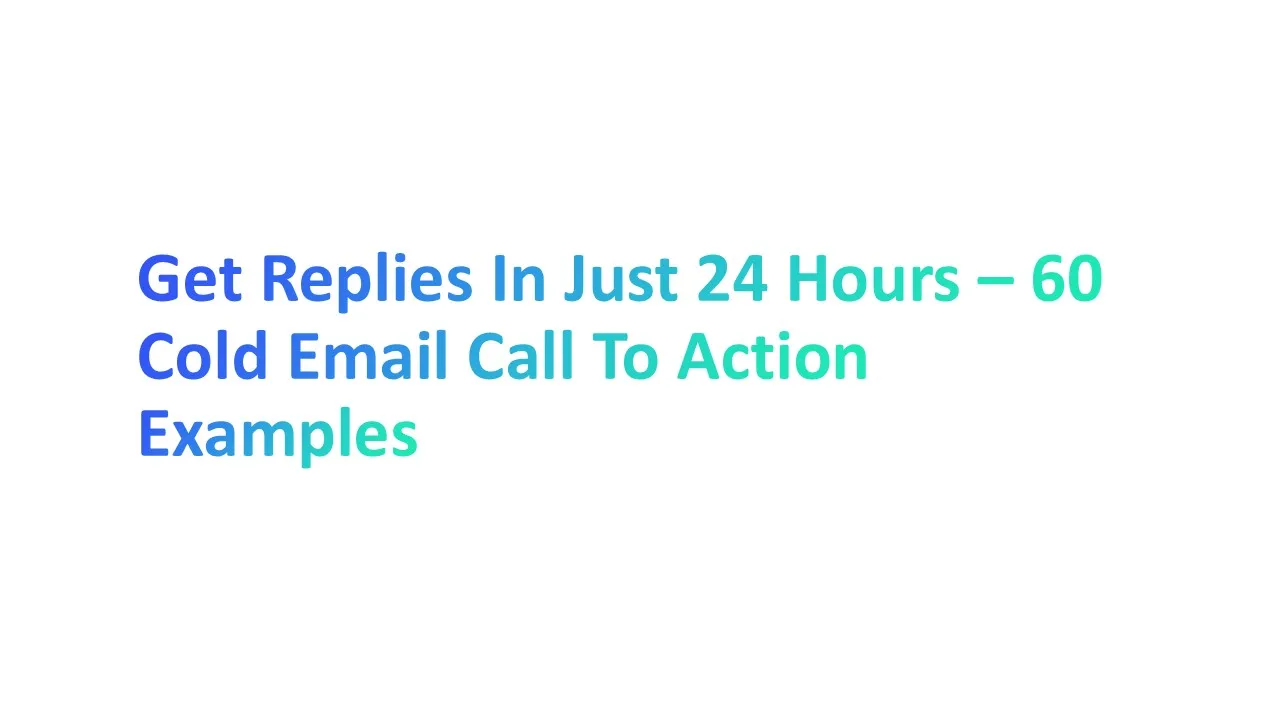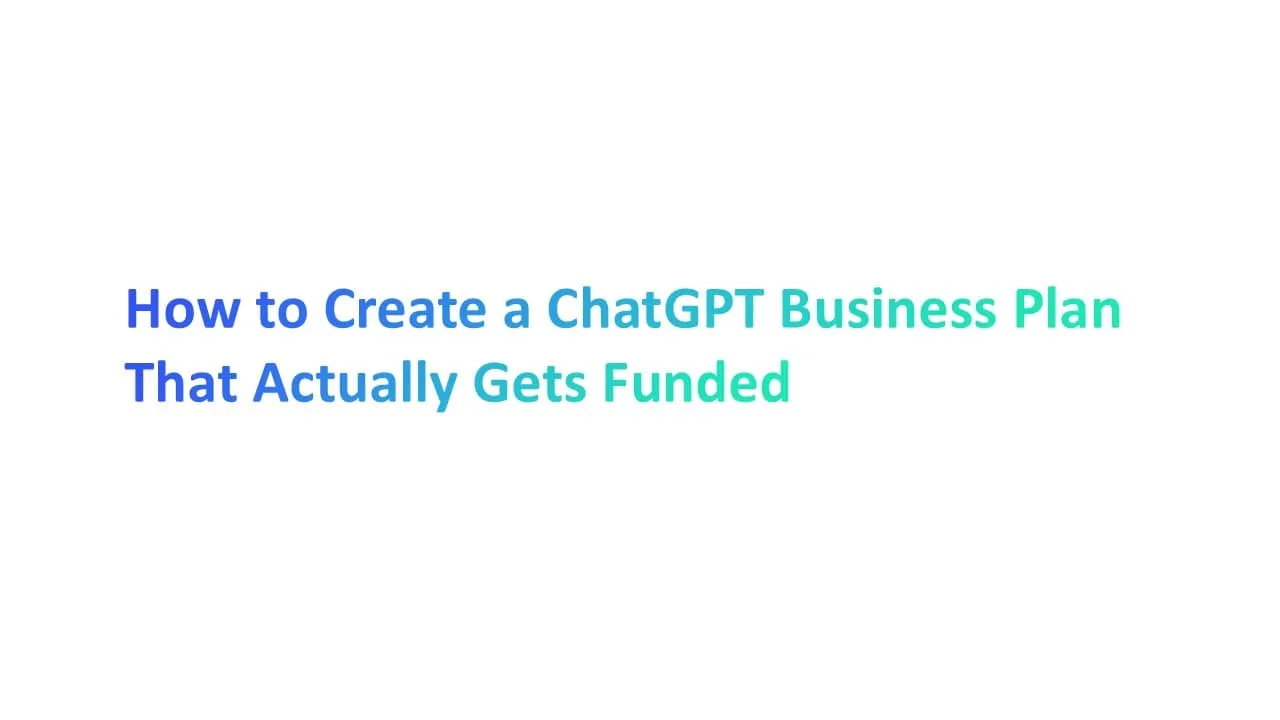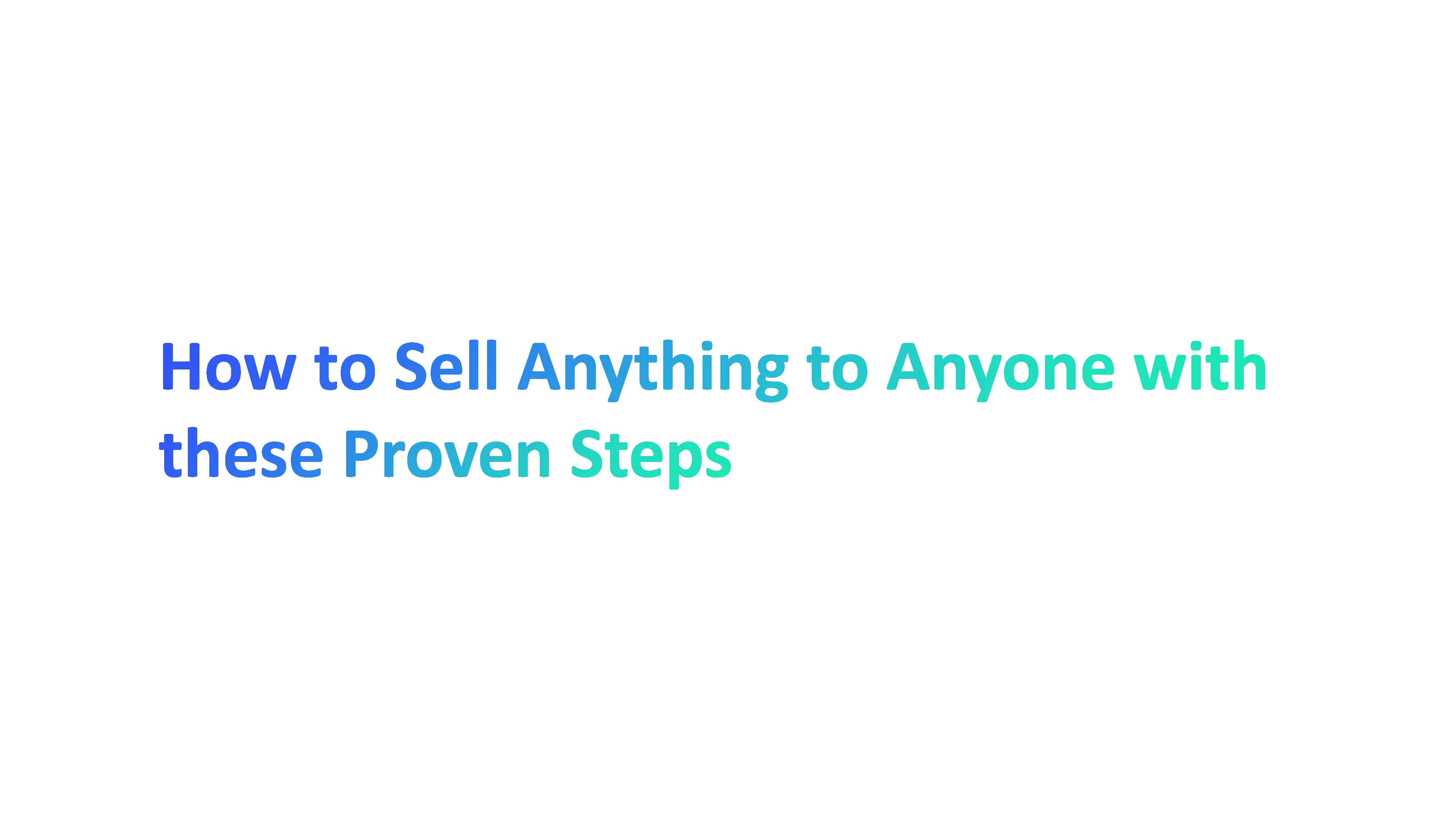Did you know that emails with an effective call to action (CTA) can improve response rates by up to 60%? If you're looking to enhance your cold email strategy, you're in the right place.
A well-crafted CTA is key to driving engagement and leading prospects to take the desired action afterwards. Let’s explore examples that guarantee results!
What is a Call to Action?

A good call to action (CTA) is the part of an email that tells the reader what to do next. It is call to action copy that could be something like “Click here,” “Buy now,” or “Sign up today.” A good CTA makes it clear what action you want the reader to take.
Importance of Good CTA in Cold Email Marketing Campaigns
If you’re sending cold emails for your business, a good CTA can be the difference between getting a reply and being ignored. Without a good CTA, your sales email might go straight to spam, and you don’t want that!
1. Increases Conversion Rates with Clear Direction
- A clear CTA helps people understand what to do next.
- If you tell them, “Sign up now to get a 10% discount,” they’re more likely to take action. This is called increasing conversion rates—getting people to do what you ask.
- With clear direction, you make their decision-making process easy.
- Email CTAs should be specific, urging readers to take a single, clear action. Effective CTA copy focuses on clarity and action-driven language.
2. Simplifies the Decision-Making Process
- When people open an email, they want things to be simple.
- If they have to guess what you want them to do, they’ll probably close the email. A good CTA simplifies their choices.
- For example, instead of “Check out our website,” try “Click here to buy.” This makes it super easy for them to act.
3. Guides Prospects Through Buyer’s Journey
- Every customer is on a journey. They start by learning about your product, then decide if they want to buy it.
- A good CTA can help guide them through this journey.
- For example, you can say, “Learn more about our product,” to keep them interested, and then later use, “Buy now” when they’re ready to make a purchase.
Cold Email CTA Examples for Instant Results
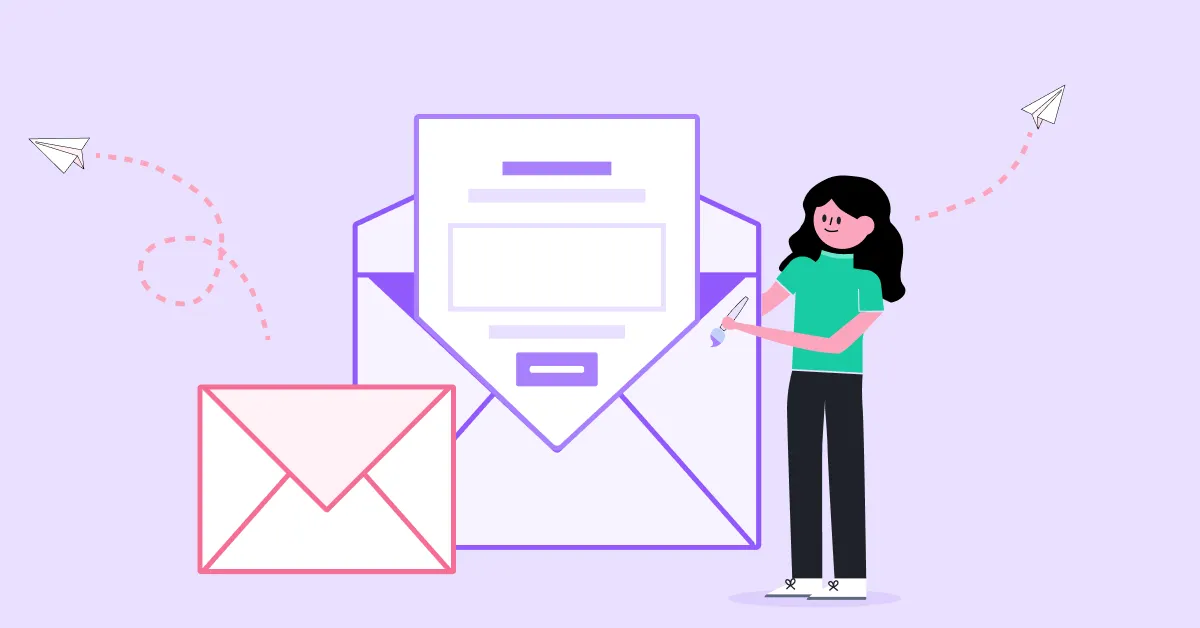
Here are some call to action email examples that can help you achieve instant results. A creative CTA can capture attention and differentiate your email from the rest.
1. Personalized Offer
A personalized offer CTA is when you tailor your offer specifically to the recipient’s needs. This shows that you understand them and are offering something valuable.
Why It’s Important: Personalized offers increase response rates because people feel the message is just for them. Personalizing your cold emails helps build trust and shows that you care about the recipient’s unique needs.
How to Implement:
Here’s how you can create a personalized offer:
- Use their name: Start with addressing the person by their name. It feels more personal.
- Mention their pain points: Show that you understand their challenges by offering a solution.
- Provide a tailored offer: Make it clear how your product or service solves their specific problem.
- Encourage a quick reply: End with a simple CTA, like "Reply with a quick 'yes' if you're interested in this personalized offer."
Examples:
“Hi [Name], I noticed your team is struggling with X. Here’s a special 10% discount just for you to solve that problem. Ready to chat?”
“[Name], get a custom solution designed specifically for your business! Reply today to claim your offer.”
“We’ve created something special for your company, [Company Name]. Click here to see how it works for your specific needs.”
“Want a free audit of your business? Reply now and we’ll set up a time just for you.”
2. Free Consultation
A free consultation CTA invites the recipient to a no-cost conversation where you offer help or guidance. It’s a great way to open the door to more meaningful conversations.
Why It’s Important: Offering something free, like a consultation, gives the recipient value without a commitment. It builds trust and positions you as an expert.
How to Implement:
To use a free consultation CTA effectively, follow these steps:
- Keep it simple: Clearly explain what the recipient will get out of the consultation.
- Offer specific value: Make sure they know how the consultation will help them solve a problem or achieve a goal.
- Make scheduling easy: Include a link or a quick way to set up the consultation.
- Create urgency: Encourage them to book sooner rather than later with phrases like "Limited slots available."
Examples:
“Need help with your strategy? Book a free consultation today and let’s work on a plan for you.”
“Get expert advice without the cost. Schedule your free consultation now.”
“Not sure where to start? Let’s chat! Click here to book your free, no-obligation consultation.”
“Unlock your business potential with a free consultation. Reply today to schedule!”
3. Limited-Time Discount
A limited-time discount CTA offers a special deal that’s available for a short period. For example, you might offer 20% off, but only for the next 48 hours.
Why It’s Important: Limited-time offers create urgency. When people think they might miss out, they act faster. This type of CTA works well in cold emails because it encourages quick decisions.
How to Implement:
- Be clear about the offer: Say exactly how much the discount is and how long it lasts.
- Highlight the deadline: Make sure they know the offer expires soon. Use phrases like “Only 24 hours left!”
- Create urgency with your words: Encourage them to act fast by using words like “now” or “today.”
- Make the next step easy: Include a link or button to claim the discount, so there’s no confusion.
Examples:
“Get 15% off your first order! Offer ends in 48 hours. Don’t miss out—click here to claim it now.”
“For a limited time, enjoy 20% off our services. Act now before the offer expires tomorrow!”
“Save $100 on your subscription when you sign up today. Hurry, this deal won’t last!”
“Special offer just for you: 25% off, but only for the next 24 hours. Click here to get started.”
4. Request a Demo
A “Request a Demo” CTA invites the recipient to see how your product works. It’s a great way to give them a taste of what you offer without asking them to commit to buying.
Why It’s Important: Demos are effective because they let people experience your product firsthand. Offering a demo in your cold email gives potential customers a reason to engage with you.
How to Implement:
- Make it personal: Tailor the demo offer to their needs. Say how the demo can solve a problem for them.
- Offer a quick and easy demo: Make it clear that the demo will be brief but valuable. No one wants to spend an hour on a sales pitch.
- Provide clear instructions: Include a link to schedule the demo or ask them to reply with a time that works for them.
- Follow up: If they don’t respond right away, send a friendly reminder.
Examples:
“Want to see how our tool can help your business? Schedule a quick 15-minute demo today!”
“Experience our platform in action. Book a live demo now and discover how it can work for you.”
“Let’s solve your biggest challenge together. Click here to schedule a free demo with our team.”
“See what makes us different—request a demo now and learn how we can help you grow!”
5. Access an Exclusive Webinar
An exclusive webinar CTA invites your recipient to join a special event that’s not available to everyone. It’s often used to share valuable information or tips while showcasing your product or service.
Why It’s Important: Webinars give people a chance to learn something new while seeing how your product can help them. It’s also a great way to build trust because they get to see you or your team in action. When people feel like they’re getting exclusive access, they’re more likely to respond.
How to Implement:
- Highlight the exclusivity: Make it clear that this webinar is not for everyone. Words like “exclusive” or “invite-only” work well.
- Offer value: Let the recipient know what they’ll gain from attending. For example, promise actionable tips or industry insights.
- Include an easy sign-up link: Make sure your email has a simple way to register. A clear button or link is best.
- Create urgency: Mention that there are limited seats or a deadline to sign up.
Examples:
“You’re invited to our exclusive webinar! Get expert insights on boosting your sales. Register here.”
“Don’t miss out! We’re hosting a private webinar with limited spots. Save your seat today!”
“Join us for an exclusive look into [Topic]. Click here to reserve your spot for this special webinar.”
“Ready to learn from the pros? Register now for our exclusive webinar—only a few spots left!”
6. Free Trial
A free trial CTA invites the recipient to try your product or service for a limited time without any cost. It allows them to explore what you offer before making a commitment.
Why It’s Important: A free trial is one of the best ways to get someone interested in your product. It lets them test it out without feeling pressured to buy. It’s a low-risk way for your potential customers to see the clear value proposition of your product.
How to Implement:
- Be clear on what they’re getting: Let them know exactly what’s included in the free trial and how long it lasts.
- Emphasize “no commitment”: Assure them that there are no strings attached. This makes them feel comfortable trying it out.
- Make it easy to sign up: Include a simple CTA button like “Start Free Trial” so they know how to begin.
- Follow up: After they’ve started the trial, send a friendly email to ask how they’re finding the product.
Examples:
“Try us for free! Start your 7-day trial today—no credit card required.”
“Experience [Product] for free. Sign up for your 14-day trial now!”
“Take [Product] for a spin with a free trial. Click here to start today!”
“See what makes us different—start your free trial with no obligation.”
7. Book a Strategy Session
A "Book a Strategy Session" CTA invites the recipient to schedule a meeting to discuss strategies that can help their business. It’s a great way to build a personal connection and offer customized solutions.
Why It’s Important: Offering a strategy session shows that you care about the recipient’s specific needs. It gives you a chance to explain how your product or service can help them, while also listening to their pain points. This builds trust and opens the door for a deeper relationship.
How to Implement:
- Make it personal: Address the recipient by name and mention how a strategy session can solve their specific problem.
- Provide value: Explain what the recipient will gain from the session. Will they learn something new or get personalized advice?
- Include a scheduling link: Make it easy for them to book the session with one click. Use a scheduling tool like Calendly.
- Create urgency: Mention that slots are limited or that the session is available for a short time.
Examples:
“[Name], I’d love to help your business grow. Book a free strategy session with me today.”
“Let’s create a plan for your success! Click here to schedule a 30-minute strategy session.”
“Need help solving [Problem]? Book a one-on-one strategy session with our expert now.”
“We’re offering free strategy sessions this week! Grab your spot before they fill up.”
8. Download an E-book
A "Download an E-book" CTA invites the recipient to access valuable content for free. The e-book typically covers useful information that solves the recipient's problem or educates them on a relevant topic.
Including secondary CTAs in your email gives your reader another option to engage.
Why It’s Important: Offering a free e-book is a great way to give value without asking for much in return. It helps build trust and positions you as an expert in your field. Providing helpful information makes it more likely that the recipient will want to learn more about your product or service.
How to Implement:
- Show the value: Clearly explain what the e-book is about and how it will help the reader. Make sure the title and description are clear.
- Keep it simple: Use a direct CTA like “Download now” so the recipient knows exactly what to do next.
- Create urgency: You can mention limited availability or a special bonus for those who download the e-book soon.
- Make it easy to access: Include a clear link or button that leads directly to the download page.
Examples:
“Download our free e-book to learn how to increase your sales today!”
“Want to improve your email marketing strategy? Get your free e-book now.”
“Ready to become an expert in [Topic]? Click here to download our exclusive e-book for free.”
“Our latest e-book is packed with actionable tips. Download it now before it’s gone!”
9. Watch a Video Case Study
A "Watch a Video Case Study" CTA invites the recipient to watch a short video that shows how a product or service has helped others. It is a visual story that demonstrates the success of a solution in real-life scenarios.
Why It’s Important: Video case studies are powerful because they provide proof of how something works. A video case study helps build trust and engagement by allowing the recipient to see real results. It also keeps their attention longer than just reading text.
How to Implement:
- Keep it short: Mention that the video is brief but packed with useful information. People are more likely to watch a short video.
- Highlight the success story: Make it clear that the video will show how your solution worked for others.
- Provide a direct link: Include a clear CTA button like "Watch Now" to make it easy for them to access the video.
- Use urgency: Mention that the video is exclusive or that they can only access it for a limited time.
Examples:
“Watch how [Client Name] increased their sales by 50% with our solution. Click here to see the case study!”
“See real results! Watch this 3-minute video to learn how we helped [Company] solve [Problem].”
“Curious how our product works? Watch our short case study video and see for yourself.”
“Learn from the best! Watch this video case study to see how we can help your business grow.”
10. Ask a Question
An "Ask a Question" CTA encourages the recipient to engage by replying to the email with a question. This opens the door for a conversation and makes the interaction feel more personal.
Why It’s Important: Asking a question encourages engagement and helps build a relationship. When you invite someone to ask questions, it shows that you care about their specific concerns and are ready to provide answers.
How to Implement:
- Make it open-ended: Ask a simple, open-ended question that invites the recipient to share their thoughts or challenges.
- Keep it relevant: Relate the question to the recipient’s business or needs. For example, ask about a problem your product can solve.
- Offer quick replies: Let them know that you’re ready to answer their questions and provide solutions.
- Be friendly: Use a welcoming tone to make it feel like a genuine conversation.
Examples:
“What’s the biggest challenge your business is facing right now? I’d love to help you solve it.”
“Do you have any questions about how our service works? Reply to this blog post or email, and I’ll get back to you right away.”
“Is there anything stopping you from moving forward? Ask me, and I’ll help clear it up.”
“Want to know more? Just reply with your question, and I’ll be happy to assist.”
11. Share Feedback
The "Share Feedback" CTA invites your recipient to tell you what they think about something. This could be emotional response, their opinion on your service, their experience with your product, or their thoughts on a topic you discuss.
Why It’s Important: Asking for feedback makes the recipient feel valued. It also shows that you care about improving persuasive writing. Plus, it opens up a dialogue, which can help build a relationship with your audience.
How to Implement:
- Be specific: Ask for feedback on something particular. This could be a recent interaction, a product, or a service.
- Make it easy to reply: Use simple language and include a quick way for them to respond, like a reply button or a link to a survey.
- Be grateful: Thank them in advance for their feedback, making them feel appreciated.
- Keep it short: Long questions might discourage responses, so make sure the feedback request is brief and clear.
Examples:
“We’d love to hear your thoughts! Reply with your feedback on our new service.”
“Your opinion matters! Let us know how we can improve by replying to this email.”
“Got a minute? Share your feedback with us, and help us serve you better!”
“What did you think of our last email? Reply and let us know!”
12. Claim a Free Template
The "Claim a Free Template" CTA offers the recipient a helpful, ready-to-use template. This could be anything from a marketing plan to an email draft, depending on your business.
Why It’s Important: Offering a free template provides immediate value. It gives your recipient something they can use right away, which helps build trust. A free template is a low-risk, high-value offer that can encourage people to engage.
How to Implement:
- Clearly state the benefit: Tell the recipient what the template is and how it will help them.
- Make the offer simple: Use a direct CTA like "Download Now" or "Get Your Free Template."
- Ensure easy access: Make sure the template can be easily downloaded with just a click.
- Create urgency: Mention that the template is available for a limited time or to a specific number of users.
Examples:
“Grab your free social media content template now. Click here to download!”
“Need help planning your next email campaign yet? Get your free email marketing campaign plan template today!”
“We’re offering a free email template for our readers. Claim yours before it’s gone!”
“Start your project today with our free template. Click here to download!”
13. Sign Up for a Course
The "Sign Up for a Course" CTA encourages the recipient to join a course, usually to gain knowledge or develop new skills. It often provides value by offering something educational.
Why It’s Important: Offering a course helps position your business as an expert in the field. When you offer a course, you not only educate your target audience but also build credibility. This CTA is effective for generating leads and long-term customer relationships.
How to Implement:
- Highlight the benefits: Clearly explain what the recipient will learn from the course and how it will benefit them.
- Keep it simple: Use a direct CTA like "Sign Up Now" to make it clear what action the recipient should take.
- Create urgency: Mention that there are limited spots or a deadline to encourage immediate sign-up.
- Make it easy: Provide a one-click link or button that takes the recipient directly to the sign-up page.
Examples:
“Ready to level up your skills? Sign up for our free course today!”
“Join our exclusive course on [Topic] and start learning now. Click here to enroll!”
“Limited spots available! Sign up for our course before the registration closes.”
“Want to master [Skill]? Sign up for our course and get started!”
14. Schedule a Meeting
A "Schedule a Meeting" CTA invites the recipient of email message to book a meeting with you for a few best practices or your team. It’s often used to offer personalized advice or provide a product demonstration.
Why It’s Important: Meetings are a great way to engage and speak directly with potential customers. It gives you the chance to understand their specific needs and offer tailored solutions. This effective CTA helps build relationships and move leads further down the sales funnel.
How to Implement:
- Make it personal: Use the recipient’s name and explain how the meeting will help solve their problems.
- Provide a clear link: Include a scheduling link to make it easy for them to pick a time.
- Mention convenience: Emphasize how quick and easy the meeting will be.
- Create urgency: Let them know that meeting slots are limited or that the offer is only available for a short time.
Examples:
“Let’s chat! Schedule a 15-minute meeting to discuss your goals.”
“Need help with [Problem]? Book a meeting with our expert to get answers.”
“We’d love to help! Click here to schedule a quick meeting with our team.”
“Limited slots available! Book your meeting with us now before they’re gone.”
15. Request a Price Quote
The "Request a Price Quote" CTA invites your recipient to click through rates and to ask for a specific pricing breakdown. It’s often used when a customer is interested but wants to know the cost before moving forward.
Why It’s Important: Price transparency is crucial. When people can easily request a quote, it reduces hesitation and moves them one step closer to purchasing. This CTA shows that you are ready to help them, making your business seem more approachable and trustworthy.
How to Implement:
- Be clear: Let the recipient know exactly what they’ll get with the price quote.
- Make it simple: Use direct wording like "Get Your Free Price Quote" to ensure there’s no confusion.
- Add urgency: You can mention that prices may change or that quotes are limited.
- Provide a clear link: Make it easy for the recipient to click and request the quote without filling out long forms.
Examples:
“Curious about pricing? Request a free quote now!”
“Get a detailed price breakdown for your project—click here to request your quote!”
“Want to know the cost? Request a price quote, and we’ll get back to you ASAP.”
“Receive a free, no-obligation price quote today!”
16. Learn More About the Features
The "Learn More About the Features" CTA encourages recipients to dive deeper into what your product or service offers. This CTA provides more information about specific features that solve the recipient’s problem or improve their experience.
Why It’s Important: Many people hesitate to purchase because they don’t fully understand how a product can help them. This CTA is designed to answer those questions. By providing more information about the features, you build trust and help customers make informed decisions.
How to Implement:
- Focus on value: Highlight the benefits the features bring to the recipient’s needs.
- Use engaging language: Make the CTA exciting, like "Discover Our Best Features."
- Make it easy to access: Link to a page that clearly outlines the product features without overwhelming the reader.
- Personalize when possible: If you know the recipient’s specific needs, tailor the features they’ll see first.
Examples:
“Want to know more? Learn about the features that make our product stand out!”
“Discover how our features can help you succeed. Click to learn more!”
“Explore all the amazing features of our service—click here!”
“Find out what makes us different. Learn about our key features now!”
17. Exclusive Invitation
The "Exclusive Invitation" CTA invites recipients to something special, like a VIP event or private webinar. This makes them feel valued and part of a select group.
Why It’s Important: People love feeling special. When you give an exclusive offer, it creates excitement and curiosity. This CTA builds trust and encourages quick action.
How to Implement:
- Make them feel important: Use words like "exclusive" or "VIP" to show it’s not for everyone.
- Be specific: Clearly explain what the invitation is for—like a special webinar or event.
- Create urgency: Mention that the invite is limited, encouraging them to act fast.
- Include a link: Make it easy for them to accept the invitation by providing a one-click link.
Examples:
“You’re invited! Join our exclusive VIP webinar.”
“Don’t miss out on our exclusive event—only a few spots left!”
“You’re one of the few invited. Click here to secure your spot!”
“Join our special event—only available to our top clients!”
18. Start a Free Audit
The "Start a Free Audit" CTA offers a review or analysis of something valuable to the recipient, like their website or marketing plan. It’s a way to provide free, personalized advice.
Why It’s Important: A free audit helps potential customers see how you can directly help them. Offering this as a CTA can attract leads who need tailored solutions. This one CTA really helps you start a conversation and show your value.
How to Implement:
- Be clear about what you’re offering: Tell them exactly what the audit will cover and how it benefits them.
- Use a strong CTA: Phrases like "Get Your Free Audit" or "Start Your Free Review" are clear and direct.
- Personalize it: Offer an audit specific to their needs or business.
- Add a link: Make it easy for them to schedule or start the audit.
Examples:
“Get a free audit of your website today. Click here to start!”
“Start your free marketing audit and see how you can improve.”
“We’re offering a free audit—see how your business can grow!”
“Sign up for a free audit, and we’ll show you where you can improve.”
19. Follow Us on Social Media
This CTA asks your recipients to follow your email campaigns or business on social media. It’s a simple way to connect with your audience beyond email.
Why It’s Important: Encouraging your audience to follow you on social media helps you stay on their radar. Social media provides continuous engagement, allowing potential customers to learn more about your brand and stay updated with your offers.
How to Implement:
- Be clear: Tell them exactly what you want, like “Follow us on Facebook for more updates.”
- Use social proof: Let them know how many others are already following you.
- Make it easy: Add social media icons or links to your profiles.
- Give a reason: Offer an incentive, like “Get exclusive deals by following us!”
Examples:
“Follow us on Instagram for exclusive tips and updates!”
“Join thousands of others following us on LinkedIn.”
“Stay connected by following us on Facebook for more offers.”
“Follow us on Twitter for instant updates!”
20. Confirm Your Interest
This CTA encourages the recipient for instant action to confirm their interest in your offer or service. It’s a simple yes-or-no call to action button call, often used to gauge engagement.
Why It’s Important: Asking your recipient to make multiple call to confirm their interest opens a direct line of communication. It helps you identify who is seriously considering your offer, allowing you to focus on those leads.
How to Implement:
- Be direct: Ask them to click a button or reply to the email with a simple “Yes” or “No.”
- Keep it personal: Mention their name or company for added connection.
- Give clear next steps: Tell them what happens after they confirm their interest.
- Create urgency: Let them know why they should confirm now.
Examples:
“Are you still interested? Reply ‘Yes’ to learn more!”
“Confirm your interest to claim your free trial.”
“Let us know if you're interested, and we’ll follow up with the next steps.”
“Hit ‘Yes’ if you’re ready to proceed, or ‘No’ if not.”
How to Write Compelling CTAs in Your Cold Emails
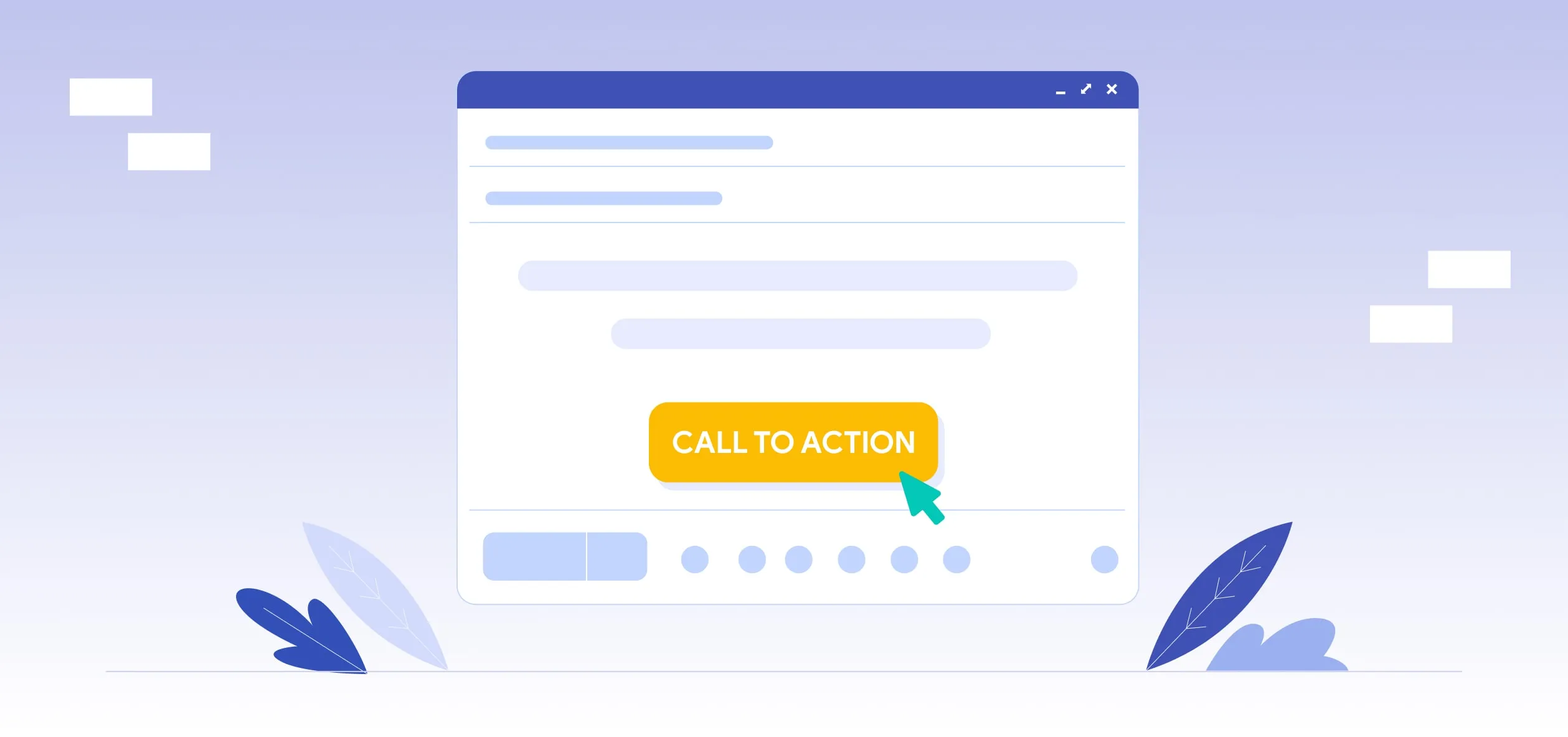
1. Keep It Simple and Direct
Keep your CTA short and easy to understand. Don’t make the reader think too much.
Here’s how to do it:
- Instead of saying “Would you consider scheduling a call with us?” use “Schedule a call now.”
- Avoid long explanations; stick to one action.
- Use clear phrases like “Get started” or “Sign up today.”
- Only ask for one action at a time.
2. Use Personalization for Engagement
Personalize your CTA to make it feel tailored to the individual.
Here’s how to do it:
- Use the recipient’s name in the CTA, like “John, start your free trial.”
- Refer to the company’s needs: “Get a solution tailored for [Company Name].”
- Mention something specific about their business or industry.
- Address their pain points directly, for example, “Improve your [specific metric] today.”
3. Create Urgency in Your CTA Text
Encourage people to act quickly by adding urgency to your CTA.
Here’s how to do it:
- Use phrases like “Limited-time offer” or “Only a few spots left.”
- Add time-sensitive words like “Now,” “Today,” or “Ends soon.”
- Example: “Claim your spot now—offer ends tomorrow.”
- Don’t overuse urgency, but include it when it makes sense, like for a limited deal or event.
Avoid using multiple CTAs in one email, as this can confuse the reader. A compelling call to action makes the reader feel they’ll miss out if they don’t act now.
4. Incorporate Action Words
Use strong, action-driven words to tell the next reader's attention exactly what to do.
Here’s how to do it:
- Start with verbs like “Download,” “Register,” “Join,” or “Get.”
- Example: “Get your free eBook now.”
- Make the action sound exciting, like “Explore our exclusive offers.”
- Keep the tone positive and encouraging, such as “Boost your sales today.”
5. Make the CTA Button Visually Stand Out
Your CTA should be easy to spot and click on, especially if it’s in button form.
Here’s how to do it:
- Use bright colors that stand out from the rest of the email (like orange or blue).
- Keep the button text short and to the point, such as “Download now” or “Get started.”
- Make sure the button is large enough to be clickable on mobile devices.
- Add a small amount of white space around the button to help it stand out.
- Your CTA buttons should have contrasting colors to stand out.
Your CTA should lead to a well-designed landing page that provides more information.
Email CTA Best Practices
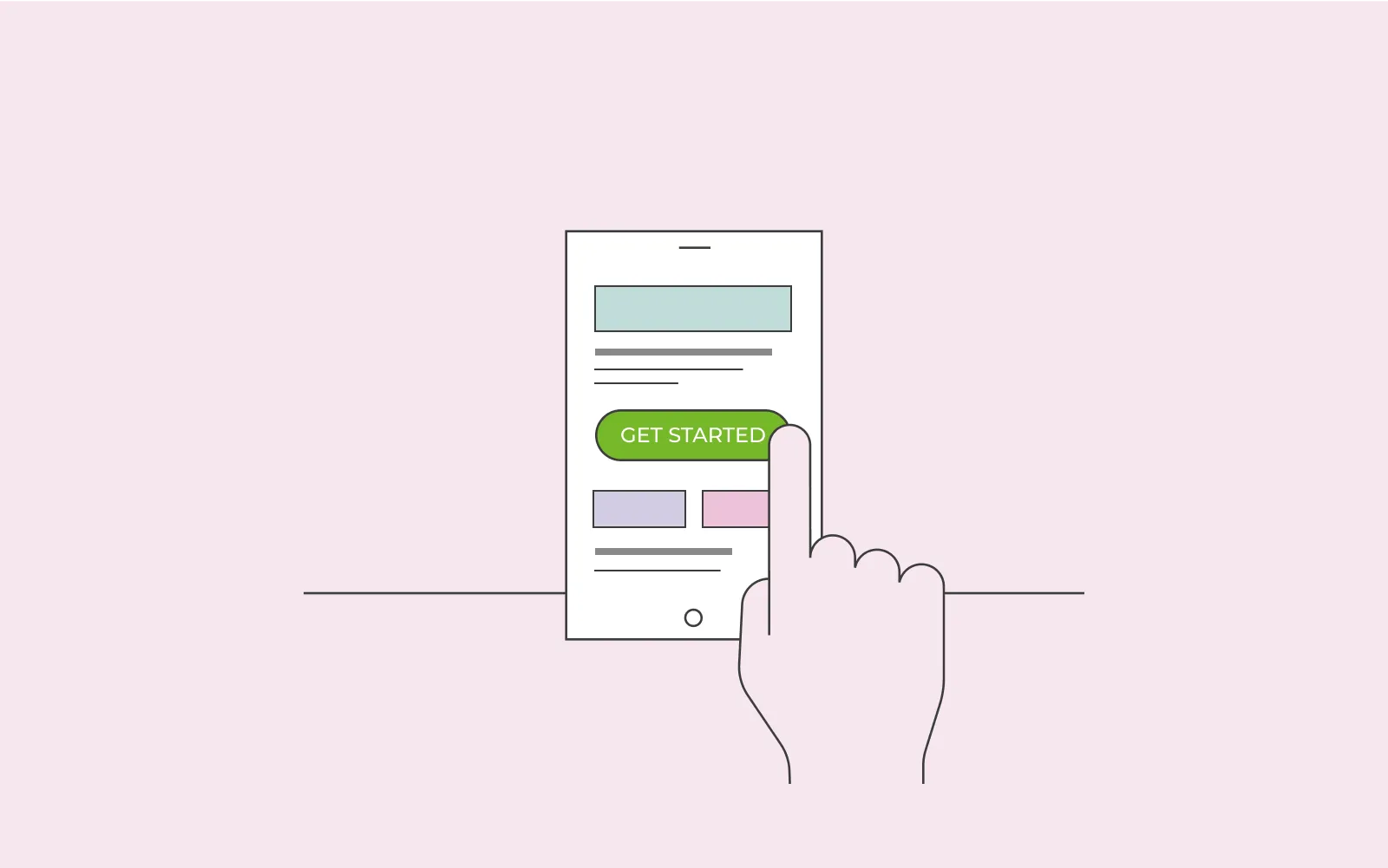
Here are some best practices for creating effective email CTAs:
- Use a clear and concise subject line: Your subject line should clearly communicate the desired action and entice the reader to open the email.
- Use a clear value proposition: Clearly state the benefits of taking the desired action. What’s in it for the reader?
- Use a prominent CTA button: A prominent CTA button that stands out from the rest of the content can drive more clicks.
- Use a scheduling link: Make it easy for the user to schedule a meeting or call by including a scheduling link.
- Use a deal forward: Create a sense of urgency and encourage the user to take action by offering a limited-time deal or special offer.
Conclusion
Your email may end up in spam for several reasons, like incorrect subject lines or sending too many emails. Fixing these issues, such as using clear call-to-action buttons and relevant content, will improve delivery rates. Keep learning and adapting your email strategy to get the best results.

